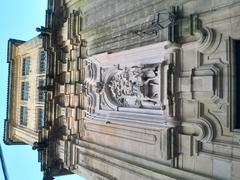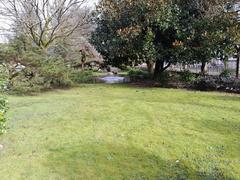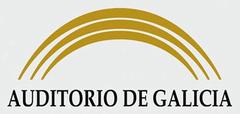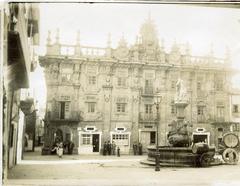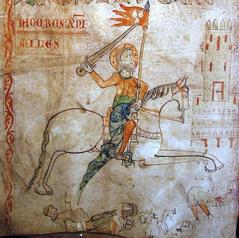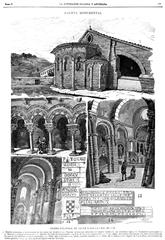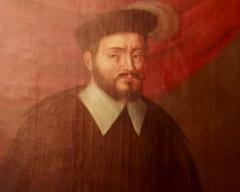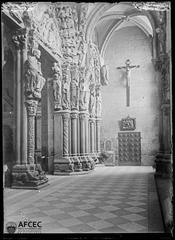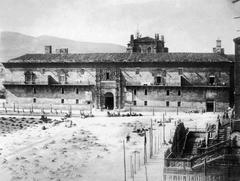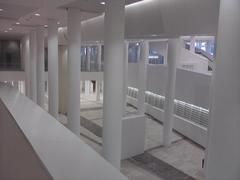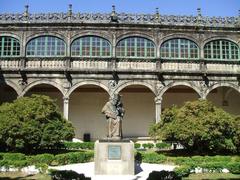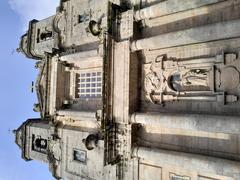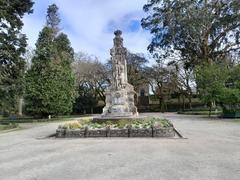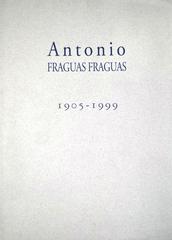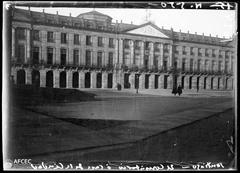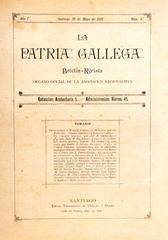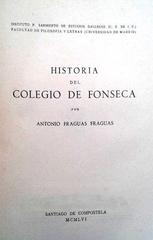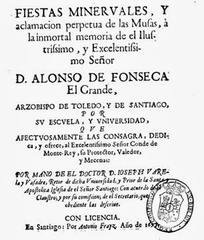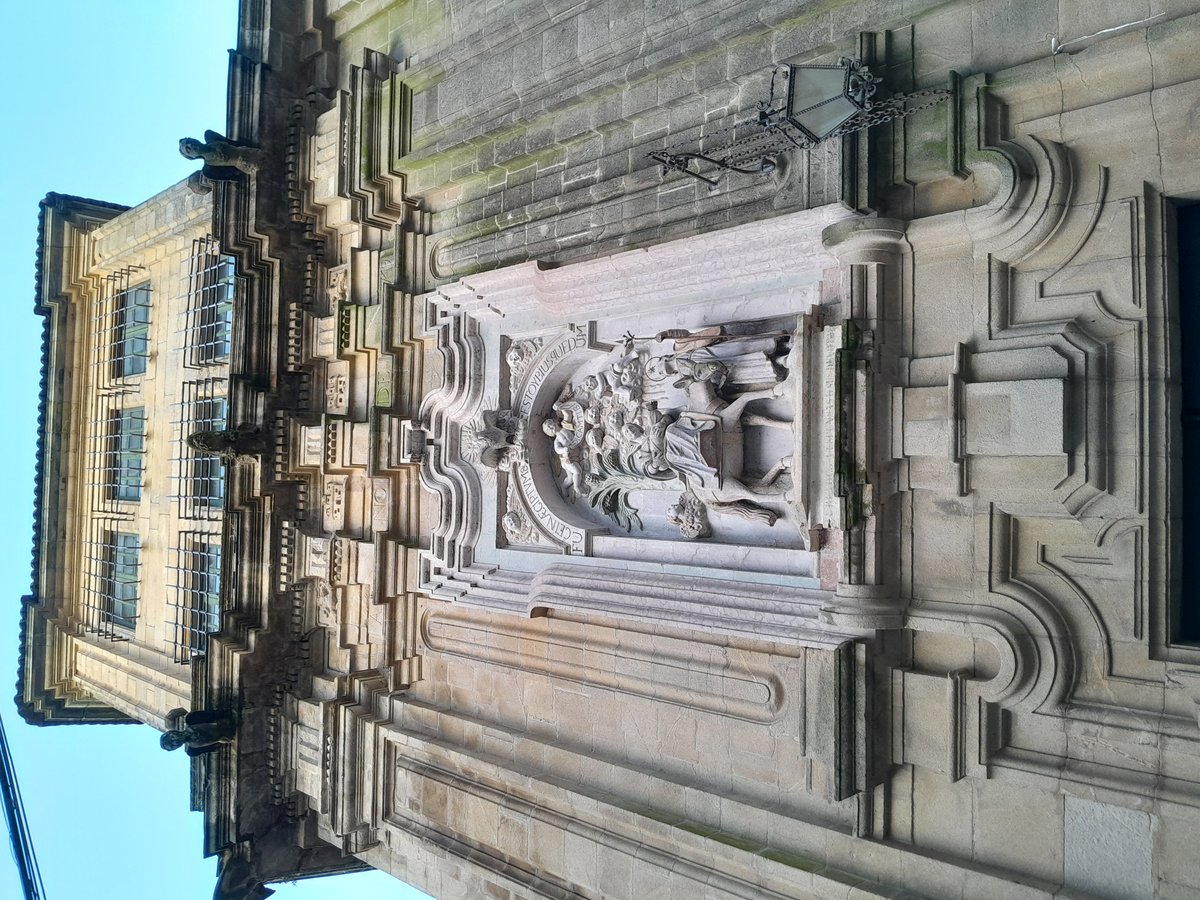
Visiting the Monastery of Saint Pelagius of Antealtares, Santiago de Compostela: Essential Guide to History, Hours, Tickets, and Travel Tips
Date: 14/06/2025
Introduction
Nestled in the spiritual and historic core of Santiago de Compostela, the Monastery of Saint Pelagius of Antealtares (Mosteiro de San Paio de Antealtares) stands as a testament to Galicia’s enduring religious and cultural legacy. Founded in the early 9th century by King Alfonso II of Asturias to guard the tomb of the Apostle Saint James, this monastery played a pivotal role in defining the city’s reputation as a major Christian pilgrimage destination on the Camino de Santiago (DeClausura; Astelus). Over the centuries, the site has transformed architecturally and spiritually, now serving as a living Benedictine convent that preserves centuries-old traditions, religious art, and a vibrant history.
This comprehensive guide details the monastery’s origins, architectural highlights, visiting hours, ticket information, accessibility, and tips for making the most of your visit to Santiago de Compostela’s historic center.
Historical Overview
Foundation and Early Significance
The monastery’s origins date to around 820 CE, when King Alfonso II entrusted twelve Benedictine monks with safeguarding the recently discovered tomb of Saint James the Apostle. Their mission was crucial in establishing Santiago de Compostela as the final destination of the Camino de Santiago, cementing its place in Christian pilgrimage routes (DeClausura; Astelus).
Initially dedicated to Saint Peter, the monastery’s spiritual focus shifted in the 12th century to Saint Pelagius (San Pelayo or San Paio), a local Galician martyr. This dedication is reflected in the presence of Saint Pelagius’s statue above the main façade, symbolizing the monastery’s deep roots in local religious identity (Wikipedia).
Medieval Role and Transformation
During the Middle Ages, the monastery evolved as both a spiritual hub and a center of learning and hospitality, welcoming pilgrims and supporting the religious life of the city. Two of its abbots, Pedro de Mezonzo and Fagildo, were later canonized, further enhancing its spiritual prestige (Historia, Espíritu y Vida, p. 4).
By the late 15th century, the monastery faced decline, leading to significant reform. In 1499, under the auspices of the Catholic Monarchs, it was converted into a convent for Benedictine nuns, consolidating female monastic life in Galicia (Historia, Espíritu y Vida, pp. 5–6).
Baroque Architectural Flourish
Most of the current architectural features date from the 17th and 18th centuries, reflecting Baroque grandeur while maintaining monastic simplicity. The main façade, designed by Bartolomé Fernández Lechuga, faces the Plaza de la Quintana, and the church’s Greek cross plan and luminous interior are adorned with Baroque altarpieces and an 18th-century organ (Astelus; Historia, Espíritu y Vida, p. 7).
Artistic and Cultural Highlights
- Museum of Religious Art: The monastery houses a museum featuring the original Antealtares altar, religious relics, paintings, manuscripts, and liturgical objects. The marble altar, believed to have been placed by the disciples of Saint James, is a unique highlight (Museos de Galicia).
- Gregorian Chant: The Benedictine nuns maintain the musical tradition of Gregorian chant during liturgical services, offering visitors a chance to experience centuries-old sacred music.
- Baroque Interior: The church’s interior features five gilded altarpieces, walnut choir stalls, and intricate religious iconography.
- Commemorative Plaque: Marks the “Batallón Literario,” a student battalion that defended Santiago against Napoleonic troops, adding a layer of civic history.
Visiting Information
Location and Getting There
- Address: San Pelayo de Ante-Altares, 23, Santiago de Compostela, 15704, Spain
- Proximity: Adjacent to the Cathedral of Santiago de Compostela and accessible via the pedestrianized Old Town (monasteries.com).
- Transport: Easily reachable on foot from central locations. Public parking and local buses connect the Old Town with the train station and airport.
Opening Hours and Tickets
- Museum Hours: Monday to Saturday, 10:30 a.m. to 1:30 p.m. and 4:00 p.m. to 6:00 p.m. Closed Sundays and during certain religious services (Museos de Galicia).
- Entry Fees: €3 general admission; reduced €1.5 for students, teachers, religious, unemployed, and accredited pilgrims. Free for children under 12 (accompanied), disabled visitors, and ICOM members.
- Guided Tours: Available upon request; advance booking is recommended, especially during high season. Tours provide in-depth historical and artistic context.
Accessibility
- Mobility: The museum and church are wheelchair accessible, but some historic areas have limited access due to architectural constraints.
- Assistance: Visitors with mobility needs should contact the monastery in advance.
Visitor Etiquette
- Dress Code: Modest attire is required (shoulders and knees covered).
- Photography: Permitted in most areas except during services or where signage indicates restrictions.
- Behavior: Silence and respect for religious practices are expected.
Accommodation at the Monastery
- Lodging: Limited rooms are available, primarily for women, married couples, and pilgrims. Full board includes traditional monastic meals (monasteries.com).
- Facilities: Private baths, towels, linens, and a peaceful retreat within the city.
- Booking: Advance reservations are essential due to limited availability.
Nearby Attractions
- Cathedral of Santiago de Compostela: Final stop for Camino pilgrims; renowned for its Romanesque, Gothic, and Baroque architecture.
- Praza da Quintana: Lively square adjacent to the monastery, perfect for photos and people-watching.
- Museum of the Galician People: Explores the region’s history and culture.
- Rua do Franco: Famous for tapas bars and local cuisine (atlifestylecrossroads.com).
- Shopping: Artisan shops and bakeries offer regional souvenirs and specialties like Tarta de Santiago.
Special Experiences
- Religious Services and Gregorian Chant: Attend Mass and listen to the nuns’ chant for a memorable spiritual experience.
- Pilgrim Hospitality: The monastery continues its centuries-old tradition of welcoming travelers, particularly those on the Camino de Santiago (willflyforfood.net).
Practical Tips
- Best Time to Visit: Weekday mornings or late afternoons for fewer crowds.
- Language: Spanish and Galician are predominant; some staff speak basic English. Translation apps can be helpful.
- Amenities: Cafes, shops, and public facilities are plentiful nearby.
Frequently Asked Questions (FAQ)
Q: What are the current visiting hours for the monastery?
A: The museum is open Monday to Saturday, 10:30 a.m. to 1:30 p.m. and 4:00 p.m. to 6:00 p.m. It is closed on Sundays and during certain religious services. Always check the official tourism website for updates.
Q: Is there an admission fee?
A: Yes, general admission is €3, with reduced rates for eligible groups.
Q: Can anyone stay overnight at the monastery?
A: Accommodation is primarily for women, married couples, and pilgrims. Booking in advance is mandatory.
Q: Are guided tours available?
A: Yes, they can be arranged in advance and are recommended for deeper insight.
Q: Is the monastery accessible for visitors with disabilities?
A: The main museum and church are accessible, but some historic sections may be challenging. Contact the monastery for assistance.
Q: Can I take photos inside?
A: Photography is generally allowed except during services and in restricted areas.
Conclusion and Recommendations
The Monastery of Saint Pelagius of Antealtares offers a rare window into the spiritual, artistic, and cultural fabric of Santiago de Compostela and the Camino de Santiago. Visitors are treated to centuries of history, living monastic traditions, and enriching artistic treasures. Its central location makes it a convenient and essential stop, whether you are a pilgrim, a history enthusiast, or a traveler seeking authentic cultural experiences.
For the most fulfilling visit, check the latest opening hours and ticket information, consider booking a guided tour, and explore neighboring landmarks. Download the Audiala app for more travel insights and interactive maps, and follow us on social media for ongoing updates.
Sources and Further Reading
- DeClausura: Monastery of Saint Pelagius of Antealtares
- Astelus: Monastery of San Paio de Santiago de Compostela
- Wikipedia: Monasterio de San Pelayo de Antealtares
- Historia, Espíritu y Vida (PDF)
- Museos de Galicia: Museum of San Paio de Antealtares Monastery
- Spain.info: Santiago de Compostela Destination Guide
- Monasteries.com: Monastery of Saint Pelagius of Antealtares
- Everything Explained Today: Monastery of Saint Pelagius of Antealtares
- atlifestylecrossroads.com: One Day in Santiago de Compostela
- willflyforfood.net: Santiago de Compostela Travel Guide
- Santiago Tourism Official Website
